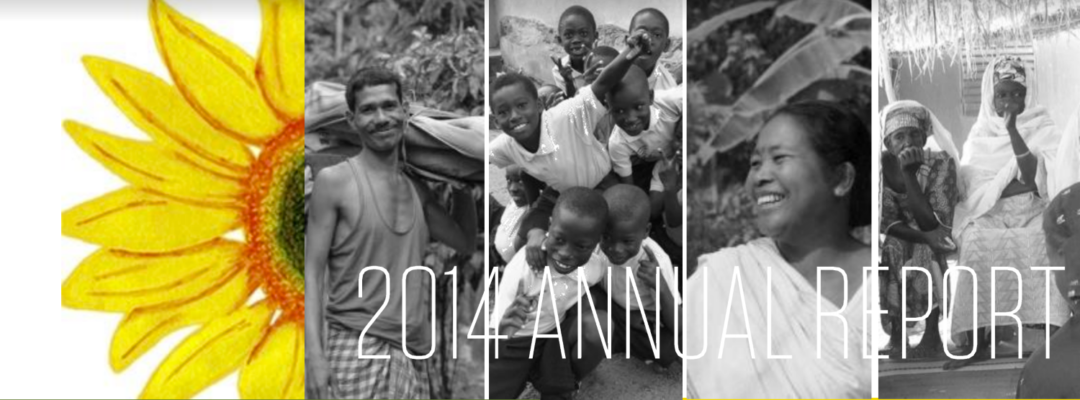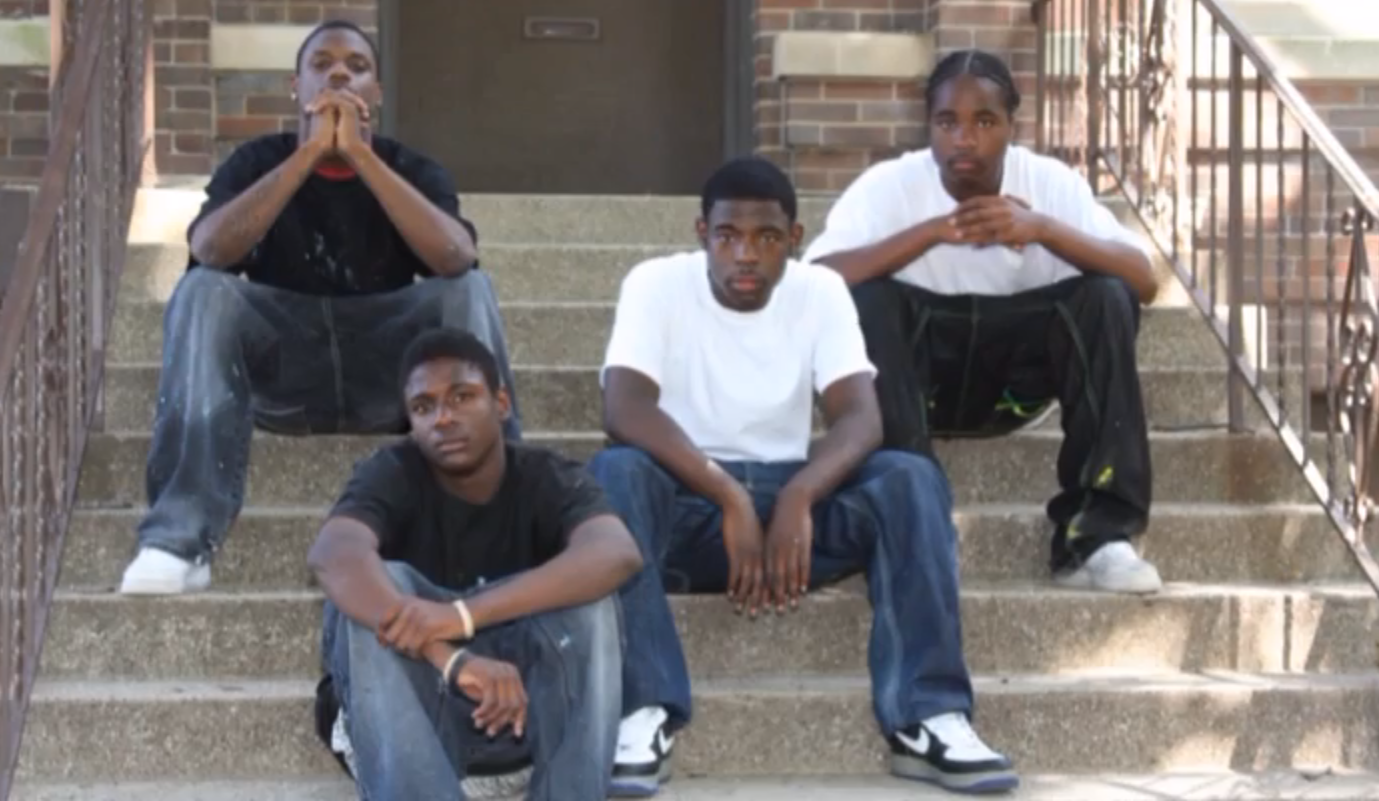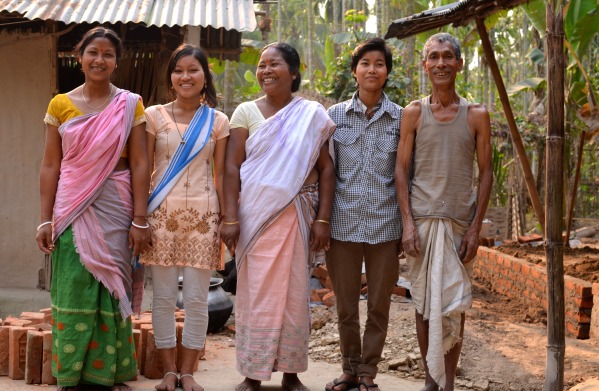Our 2014 Annual Report: The Past, Present, and Future of Philanthropy
Categorized as: About us, Education, Grantee, Grantmaking strategy, Job Creation, MY JOB book and community, Our Partners, Poverty Alleviation, Stories, Storytelling, U.S. & Tagged as: 2014 grantees, Annual report, Impact on January 3, 2015.

Part II of our series on our new grantmaking strategy includes our 2014 annual report announcing our rockstar partners and their impact, changes we’ve seen in philanthropy over the years, and our vision for the future.
See Part I here.
Editor’s note: How do we obliterate poverty in the U.S. and around the world? One person, one project, one village at a time. Our 2014 annual report honors the heroes of Skees Family Foundation from Chicago to Sri Lanka.
See attached PDF (SFF 2014 Annual Report) to read our full 2014 annual report. Heartfelt thanks to our board member, Elisabeth Skees Deogracias, for her vision and precision in its graphic design.
2014: What a year!
By Suzanne Skees for Skees Family Foundation
The Past: Top-Down Philanthropy
When I was growing up in Ohio, it seemed to my young eyes that there were three types of people: the haves, the have-nots, and the who-cares.
Philanthropists lunched at exclusive clubs and wrote large checks to support local education and the arts. Social activists demonstrated on the streets with placards pleading for peace and equality. And ordinary folks stayed safely in the suburbs, where they took care of their own, with little awareness of issues beyond home.
The good news is that I don’t see those distinctions anymore. First television, and then Internet and social media, have brought violence, climate change, natural disasters, terrorist attacks, poverty, and protests right into our living rooms and onto our handheld devices. So, it’s nearly impossible to ignore the plight of our fellow and sister humans.
These days, many of us self-identify as both givers and activists: We’re informed citizens who wish to impact our world in positive ways, right now.
Social change is not just for large foundations and robber-baron heirs anymore. We have the information, technology, and collaborative ability to create real change. From the smallest purchases we make (toilet tissue: recycled or not?) to the ways we spend our weekends (shopping or volunteering?), our choices matter.
Thinking about everyday impact doesn’t make me feel burdened or guilty; rather, it makes me excited about the possibilities for us truly to evolve as a species.
The Present: We’re Impatient for Change
Our biggest current challenge is our desperate wish for equality and prosperity for all human beings, NOW. Our mission statement inspires and motivates us; it also can make us a little crazy. Why should children still die from malnutrition and malaria? Why should mothers toil fourteen hours a day and still be unable to feed their children? Why should young men of color still experience prejudice at every turn?
 Youth from our partner PBMR’s restorative justice peace program on the South Side of Chicago encounter prejudice every time they walk out the door.
Youth from our partner PBMR’s restorative justice peace program on the South Side of Chicago encounter prejudice every time they walk out the door.
We dream, 52 years later, with Dr. Martin Luther King, Jr., of a time when all people will be equal and free. We dream with our nation’s forefathers of a land where people have the ability to strive for life, liberty, the pursuit of happiness; to cultivate farms, build products, sculpt art, nurture families, and fulfill our ambitions. It’s not just the American dream: We want this for all our global neighbors.
Our Family’s Attempts to Solve Enormous Inequalities
The Skees Family Foundation, which we fondly call “the world’s tiniest foundation with the mightiest ambitions,” launched in 2004. We’re an unremarkably ordinary family, with rent and mortgages, fulltime jobs and growing families. Yet we’ve all directly experienced the “American dream” of working our way through school and then being able to support our families through employment. Our collective family experience makes it impossible for us to take liberty and opportunity for granted–and that’s all we wish for families everywhere. Our mission is to extend self-help opportunities in education and jobs to all, in the U.S. and around the world.
It’s taken a while for our family to feel empowered as philanthropists. My siblings struggle to pay their bills, get their kids to soccer practice, and get dinner on the table. Many family members felt like the foundation was not “our” money. Indeed, it’s legally not ours: Once donated into the foundation, it belongs to public charity. We merely stand as stewards with a fiduciary duty to invest wisely and accomplish the highest possible good for society. Some ways we’ve learned to work together:
Going public and transparent: For the first several years, we had no website and flew “under the radar.” Even our family had little awareness of our grants and partners, successes and failures. Our nonprofit partners strongly encouraged us to go public with the Skees Foundation—mostly to advance our stories of unsung heroes working to end poverty. That took courage, willingness to be vulnerable, and humility to share all our flaws and mistakes online. We created our first website, posted our financial information, and built a real-time map of where our partners work.
Empowering individual grantmaking: Our “Local 2 Global” program allows family members to document their volunteer service for grant credit toward personal, discretionary causes. Many family members have utilized this program to give to schools and nonprofits in their home communities.
Convening family grantmaking: Each of our eight nuclear families collaborates on “Family Grants” to a charity of their choice. Families research and vet an organization, submit a proposal, and issue the grant themselves to the nonprofit they’ve chosen.
Cultivating board leadership: We thought about leadership tracks and committees, and then we just leapt into action with a family board recruitment campaign that brought forth six Skees women across three generations. Jasmine, Shelly, Sally, Elisabeth, and Brienne have joined me and all have undertaken skill-specific roles. They’ve created a passionate team who support one another and me. Read more about our unique board here.
Having frank conversations: Along the way, we ask ourselves: Why did we end up here? Why us, and not our equally intelligent, capable clients in villages and slums around the world? We wonder how we can eradicate imbalances of opportunity and resources rather than simply throw money at symptoms. We constantly examine our motivations: Are we investing wisely or reacting emotionally? Are we manipulating our grantee partners or supporting them?
Specializing in small: We’ve learned our small grants help most to build the smallest nonprofits and startup social enterprises. We find organizations that take a fresh approach to ancient social problems, engage local leadership, and work holistically with the poorest of the poor, to provide not charity but opportunity to become educated and employed. We’re just the investors, not the experts; so we support organizations we trust to get the job done. This year, we’ve implemented a new grantmaking program intended to invert the funder-nonprofit power imbalance and navigate our way to a post-poverty world.
Offering multidimensional partnerships: I’m constantly blown away by the generosity of our board and extended family, giving far more than grants. They volunteer from Charlotte to Cincinnati to San Francisco, to homeless shelters and youth intervention programs and AIDS research. This is our family’s true wealth: We come from a culture of giving, an unshakable faith that every small act matters, in some way. We take the same approach within the foundation, providing advisory, advocacy, and communications assistance to our partners long after the grant check is issued.
The Future: A Post-Poverty World
Everyone has the power to effect real change. We can join forces within like-minded communities to volunteer our time and crowdsource our funds for exponential impact. A study reported in the Chronicle of Philanthropy indicates that giving circles are growing, especially for women, minorities, and donors under age of 40. The upcoming $68 trillion transfer of wealth from Baby Boomers to their children will shift investing forever, as young people turn all investing into “impact investing.” Meanwhile, 90 percent of kids and 75 percent of Millennials give to charity, and not to the large, traditional 501(c)3s to whom their grandparents wrote checks. Young people give through their mobile phones, crowdfunding for social justice at the grassroots level, supporting cancer treatment for a kid in Indiana or buying seeds for farmers in Guatemala.
 Employees of our partner Upaya Social Venture‘s local-partner factory in north India, Minakshi (2nd from L) and Malabika (2nd from R) with their family in Assam.
Employees of our partner Upaya Social Venture‘s local-partner factory in north India, Minakshi (2nd from L) and Malabika (2nd from R) with their family in Assam.
The giving world has become our oyster: We can spend a few moments online, matching our skills and passions with needs in our own hometowns and far beyond.
Philanthropy, the “love of mankind,” has expanded to include people of all genders and cultures, as well as all income levels. The tools of the trade have opened up possibilities for investing, collaborating, and communicating. It’s going to be exciting to see how we use them to reshape our world, together.
There’s a lot still to do. Almost half the world’s population lives on less than $2.50/day, many without electricity, clean water, healthcare, and schools. We can focus on what’s still wrong. Or we can look to what improvements have been made—for example, One.org vividly illustrates increases in life expectancy and decreases in extreme poverty, here.
We can perceive lack and limit, or remain resolutely optimistic about progress made thus far. My family and I choose to work together, within our family, with our nonprofit partners, and with ordinary philanthropists like us, because we believe in the collective power of good.
See Part I of our series on grantmaking here.
Photographs courtesy of PBMR Peace Program and Upaya Social Ventures.
LEARN more about our grantees here.
SHARE this story on Facebook and Twitter; see menu at top and bottom of page.
DONATE directly to our partners; search by geographic or issue area on our CAUSES page, here.
SUBSCRIBE! Like what you see? Click here to subscribe to Seeds of Hope!
